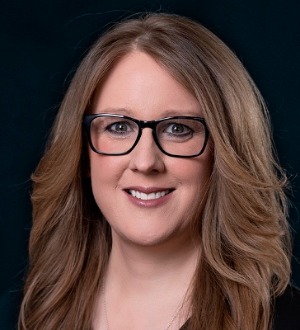Insight
How the DOL's Final Rule on White Collar Exemptions Compares To Its Original Proposal
We finally know details of the Department of Labor’s long-awaited Final Rule updating the executive, administrative, professional, and outside sales exemptions – i.e., the so-called “white collar” exemptions.

As we posted on Wednesday, we finally know details of the Department of Labor’s long-awaited Final Rule updating the executive, administrative, professional, and outside sales exemptions – i.e., the so-called “white collar” exemptions.
Although the Office of Management and Budget has approved the DOL’s Final Rule, it has not been officially published in the Federal Register, which publication is scheduled for May 23, 2016. In the meantime, the substance of the OMB-approved Final Rule is available online. This post responds to some questions we have received about how the Final Rule compares to the agency's original proposal.
To recap, the DOL issued its Notice of Proposed Rulemaking (“NPRM”) in July of 2015, which outlined its original proposal for the changes to these regulations. The agency then accepted public comment on its proposal through September 4, 2015. At that time, BrownWinick submitted an extensive public comment outlining a number of concerns with the DOL’s proposed changes. Not surprisingly, the Agency did not agree with our detailed critiques of its proposal; nevertheless, of the nearly 300,000 public comments received by the DOL, the submission by BrownWinick on behalf of the Iowa Association of Business and Industry was cited multiple times in the DOL's Final Rule. Despite expressed opposition from many, the DOL went forward with much of its original proposal. A few important changes between the DOL's NPRM and its Final Rule, however, did result from the collective efforts of the public commenters:
Salary Level.
1. Current regulations set the salary level at $455 a week ($26,600/year), which was established to exclude the lowest 20th percentile of the country’s lowest-wage region and lowest-wage industry.
2. The NPRM proposed raising the threshold to $970 a week ($50,440/year), which was the 40th percentile of full-time non-hourly workers on a national basis – without regard to regional differences.
3. The Final Rule keeps the 40th percentile measure proposed in the NPRM, but looks to the 40th percentile of full-time salaried workers in the lowest-wage Census Region (currently, the South), which results in a salary level of $913 a week ($47,476/year).
Highly Compensated Employee Compensation Level.
1. Current regulations establish a salary level for the HCE exemption at $100,000 annually.
2. The NPRM proposed a new level of $122,148, based on the 90th percentile of full-time non-hourly workers nationally.
3. The Final Rule uses the same 90th percentile of full-time non-hourly workers on a national basis as was proposed in the NPRM, which number has since gone up to $134,404 annually.
Automatic Adjustments.
1. Current regulations do not require periodic or automatic adjustments to the salary level.
2. The NPRM proposed incorporating a mechanism to re-calculate a new salary level annually, based either on a fixed percentile of BLS earnings data or using the CPI.
3. The Final Rule does require regular, periodic updates to maintain the salary level at the 40th percentile of full-time salaried workers in the lowest-wage Census region (and HCE comp at the 90th percentile nationally), but calls for updates every three years rather than annually.
Bonuses.
1. Current Regulations do not allow any portion of nondiscretionary bonuses or commissions to count toward the salary level requirement.
2. The NPRM indicated it would consider whether it might allow some portion of bonuses to count toward the requirement, but did not give specific proposed language.
3. The Final Rule allows up to 10% of certain non-discretionary bonuses, incentive payments, and commissions (so long as they are paid at least quarterly) to count toward the required salary level.
Duties Tests.
1. Current regulations impose a “duties” test in addition to the salary level and salary basis requirements for each exemption.
2. The NPRM suggested the agency was considering revisions that might significantly change the duties tests. Although the NPRM said “[t]he Department is also considering revisions to the duties tests in order to ensure that they fully reflect the purpose of the exemption,” the DOL proposed no specific regulatory language and offered few details regarding the changes being contemplated.
3. The Final Rule makes no changes to the standard duties tests.
Effective Date. Of course, at the time of the NPRM, it was unclear exactly when the Final Rule would be released, or how much time would be given between its publication and its effective date. We know now the effective date of the Final Rule is December 1, 2016. The automatic updates to the salary thresholds will occur every three years, beginning on January 1, 2020.
Although the Office of Management and Budget has approved the DOL’s Final Rule, it has not been officially published in the Federal Register, which publication is scheduled for May 23, 2016. In the meantime, the substance of the OMB-approved Final Rule is available online. This post responds to some questions we have received about how the Final Rule compares to the agency's original proposal.
To recap, the DOL issued its Notice of Proposed Rulemaking (“NPRM”) in July of 2015, which outlined its original proposal for the changes to these regulations. The agency then accepted public comment on its proposal through September 4, 2015. At that time, BrownWinick submitted an extensive public comment outlining a number of concerns with the DOL’s proposed changes. Not surprisingly, the Agency did not agree with our detailed critiques of its proposal; nevertheless, of the nearly 300,000 public comments received by the DOL, the submission by BrownWinick on behalf of the Iowa Association of Business and Industry was cited multiple times in the DOL's Final Rule. Despite expressed opposition from many, the DOL went forward with much of its original proposal. A few important changes between the DOL's NPRM and its Final Rule, however, did result from the collective efforts of the public commenters:
Salary Level.
1. Current regulations set the salary level at $455 a week ($26,600/year), which was established to exclude the lowest 20th percentile of the country’s lowest-wage region and lowest-wage industry.
2. The NPRM proposed raising the threshold to $970 a week ($50,440/year), which was the 40th percentile of full-time non-hourly workers on a national basis – without regard to regional differences.
3. The Final Rule keeps the 40th percentile measure proposed in the NPRM, but looks to the 40th percentile of full-time salaried workers in the lowest-wage Census Region (currently, the South), which results in a salary level of $913 a week ($47,476/year).
Highly Compensated Employee Compensation Level.
1. Current regulations establish a salary level for the HCE exemption at $100,000 annually.
2. The NPRM proposed a new level of $122,148, based on the 90th percentile of full-time non-hourly workers nationally.
3. The Final Rule uses the same 90th percentile of full-time non-hourly workers on a national basis as was proposed in the NPRM, which number has since gone up to $134,404 annually.
Automatic Adjustments.
1. Current regulations do not require periodic or automatic adjustments to the salary level.
2. The NPRM proposed incorporating a mechanism to re-calculate a new salary level annually, based either on a fixed percentile of BLS earnings data or using the CPI.
3. The Final Rule does require regular, periodic updates to maintain the salary level at the 40th percentile of full-time salaried workers in the lowest-wage Census region (and HCE comp at the 90th percentile nationally), but calls for updates every three years rather than annually.
Bonuses.
1. Current Regulations do not allow any portion of nondiscretionary bonuses or commissions to count toward the salary level requirement.
2. The NPRM indicated it would consider whether it might allow some portion of bonuses to count toward the requirement, but did not give specific proposed language.
3. The Final Rule allows up to 10% of certain non-discretionary bonuses, incentive payments, and commissions (so long as they are paid at least quarterly) to count toward the required salary level.
Duties Tests.
1. Current regulations impose a “duties” test in addition to the salary level and salary basis requirements for each exemption.
2. The NPRM suggested the agency was considering revisions that might significantly change the duties tests. Although the NPRM said “[t]he Department is also considering revisions to the duties tests in order to ensure that they fully reflect the purpose of the exemption,” the DOL proposed no specific regulatory language and offered few details regarding the changes being contemplated.
3. The Final Rule makes no changes to the standard duties tests.
Effective Date. Of course, at the time of the NPRM, it was unclear exactly when the Final Rule would be released, or how much time would be given between its publication and its effective date. We know now the effective date of the Final Rule is December 1, 2016. The automatic updates to the salary thresholds will occur every three years, beginning on January 1, 2020.



















